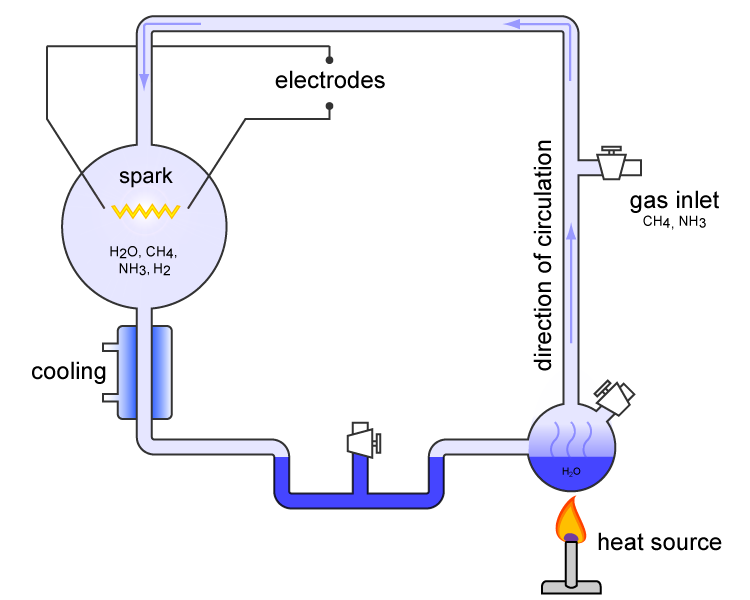|
Miller–Urey Experiment
The Miller–Urey experiment (or Miller experiment) is a famous chemistry experiment that simulated the conditions thought at the time (1952) to be present in the atmosphere of the early, prebiotic Earth, in order to test the hypothesis of the chemical origin of life under those conditions. The experiment used water (H2O), methane (CH4), ammonia (NH3), hydrogen (H2), and an electric arc (the latter simulating hypothesized lightning). At the time, it supported Alexander Oparin's and J. B. S. Haldane's hypothesis that the hypothesized conditions on the primitive Earth favored chemical reactions that synthesized more complex organic compounds from simpler inorganic precursors. One of the most famous experiments of all time, it is considered to be groundbreaking, and to be the classic experiment investigating abiogenesis. It was performed in 1952 by Stanley Miller, supervised by Harold Urey at the University of Chicago, and published the following year. After Miller's death in 20 ... [...More Info...] [...Related Items...] OR: [Wikipedia] [Google] [Baidu] |
